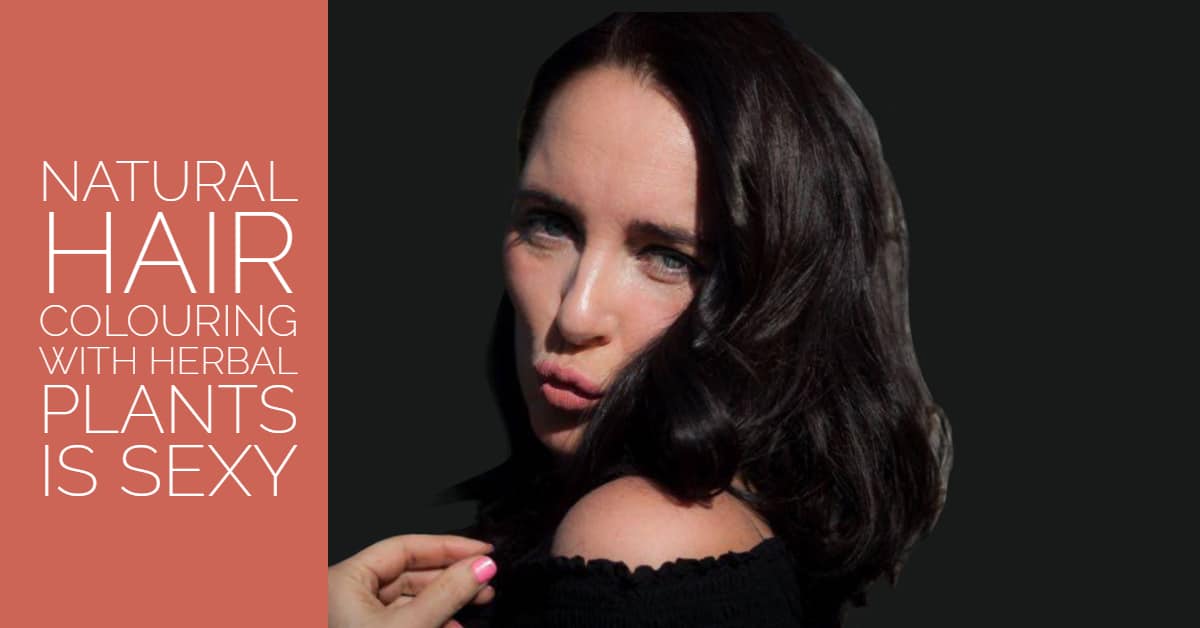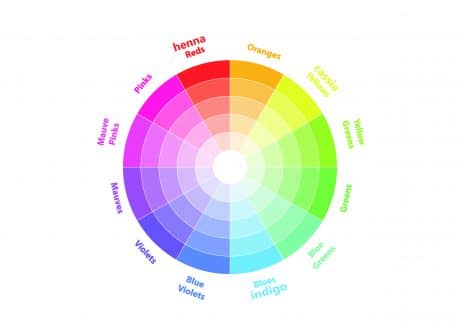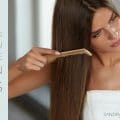Natural hair colouring with herbal plants is sexy

Pure herbal plant pigments for natural hair colouring
Creating your own Herbal Pigment Colour Recipe
Natural hair colouring with plant pigments creates intense, unique, and vibrant hair colours as well as well-groomed hair and no toxic chemicals!
Through herbal pigments, you can get a more natural-looking colour in an array of tones. Depending on how rich you want the colour, you could also just use one pigment. For a multi-dimensional colour, you can mix different ratios of herbal colourant to get your desired shade. After a bit of trial and error, you will be able to use your own, bespoke ‘colour recipe’ that you can go back to every time you need a top up.
As with all natural hair colouring recipes, there are different components and ingredients that make up your hair dye. This includes; a base and a colour tone.
Please note that recipes might vary if you have chemically coloured or treated hair. If your hair isn’t natural, then you can still use the recipes, but you might need to play around with the proportions a little.
You can use the colour wheel below as your guide when choosing a natural hair shade
The primary colour wheel may look familiar as it is used in schools to teach colour mixing. It was originally designed for painters during the eighteenth century to show how mixing the three primary colours (red, blue and yellow) can create secondary colours (orange, purple and green).
All the colours cover a wide range of tones and shades. For example, light, medium and dark browns will usually contain warm and cool tones — bluish, greenish, yellowish, and reddish — that create particular browns.
Basic understanding of colour theory 
Before we begin, it’s essential to have a basic understanding of colour theory to ensure you pick the right type of dye. Primary colours (red, blue and yellow) cannot be created by mixing colours.
Think of henna as the red tone, indigo as the blue and cassia as the yellow. To create secondary colours (i.e. varying shades of blonde, red or brown/black), you would need to mix the three. For instance, by combining a red dye with a green one, you will get brown. Amla’s colour varies, depending on the colour of your hair and so it is used more like a ‘tone adjuster’.
Creating a bespoke herbal hair colour mix is a very personal experience and what works for you might not work for others. Everyone will have their own recipes and preferences. The journey to finding your perfect herbal mix will require some trial and error so make sure you record the different proportions and results each time to help you get the right blend. The more detail you put into your notes, the easier it will be to get your chosen hair colour time and time again.
The first two crucial steps are determining your base colour and (natural or from chemical dyes) and to pick the colour tone you want to achieve (neutral, cool, warm)
The “base” colour
The first thing you should do before you dye your hair is to identify its base colour. All hair colours are different so instead of just saying it’s black or brown take a deeper look at a few of the strands. Chances are some of them will be a different tone. You can get a better idea by stepping out into natural light. For example, someone with brown hair might find that they have tones of black or honey in their hair, which determines how light or dark it is. The herbal pigment you apply will react differently to the different tones, and the proportion of those tones, in your hair so this is worth bearing in mind.
Finding your tone
Picking the right tone for your hair colour is essential as this can help lift your complexion or make it look dull and lifeless. The three main tones that our hair colour falls under is: warm, cool and neutral. You can find out what your natural hair tone is by looking at the clothes you wear – what shades look best on you?
Warm tones
Those with warmer tones look best in gold or copper clothes, and their skin will have a yellow undertone. You can determine you’re warm-toned by looking at the kind of jewellery you wear too. Do you look better in gold than silver? If so, then you’re warm toned.
Those with a warmer tone will typically have one of these colour combinations: blonde hair with fair skin and blue eyes, golden brown hair with fair skin and hazel eye or red hair with fair skin and
hazel eyes. Hair colours that suit warm toned ladies include bronze, copper or golden highlights, which will bring warmth to your hair. The best herbal colourants to go for are henna and cassia if you’re warm-toned.
Cool tones
Cooler tones look best wearing blues and violets, and their skin will have a slightly pink undertone. They’ll also suit silver jewellery better than gold. Those with a warmer tone will typically have one of these colour combinations: dark hair with fair skin and blue eyes, blonde hair with rosy skin and blue eyes or black hair with dark skin and deep brown eyes. When picking a suitable hair colour go for ashy or champagne hues or even platinum, which can add coolness to your hair colour. The best herbal hair colourants to go for are amla and indigo.
Neutral Tones
If you are neutral toned, it means you have a mix of warm and cool tones and can pull off most colours. Your hair, skin and eye colour will also vary from fair to dark.
Colourful herbs
You can play around with the colour of your herbal dye by adding different types of tea, including chamomile, hibiscus, leeks, red ocher, rhubarb, saffron, sage or turmeric.
Natural hair colouring with herbal colourant have some limits
Chemical-free hair dye is a great way to change your hair colour without damaging it but it comes with some limitations. The three primary tones found in herbal colourants are red, yellow and blue. These will form the base of your hair dye. Once you’ve mastered the basics, you can introduce plant pigments to lighten or darken your base colour. However, the range of colours you can achieve from plant pigments are a lot less than what you’d find with a chemical dye. Herbal colourants are also unable to significantly lighten dark hair.
Lightening your hair naturally can be a long process which requires you to apply your colourant regularly for a few months in order to see results. Cassia is usually used to achieve a lighter tone or to brighten your natural hair colour.
As well as being unable to drastically lighten dark hair, herbal hair colourants won’t be able to turn pigmented hair into a bright colour like green or pink.
Mixing and storing herbal colours
Herbal hair colourants come in powder form and require a liquid, like water to be added before applying it. If you’re using amla you can make the mix in advance and let it set overnight. Indigo, however, needs to be used immediately and cassia and henna release their dye slowly, which means it should be mixed at least two hours before it’s applied (overnight if possible).
Influences that can affect stain
You might be confused as to why your dye stains better on one occasion and not another. This is because the environment that the herbal plant is grown in and the climate around it can influence the strength of its stain.
How to mix henna and cassia
For optimal grey coverage mix henna and cassia with a liquid that is acidic, like apple cider vinegar or lemon juice. This will allow the dye to stick easily to your hair. Lemon juice also works well with henna and cassia if you want to lighten it. To deepen red hair, try apple cider vinegar or try coffee and tea which also have darkening properties.
When picking a tea to complement your herbal hair dye, you should consider how the mixture will work with your hair tone. For instance, lemon juice or chamomile tea mixed with cassia will boost your hair’s brightness, especially those with blonde tones. If you add these ingredients to henna it will give it a more golden shine. And when combining ingredients like raspberry or pomegranate tea to cassia or henna, your hair will have a redder finish.
Once you have decided what type of liquid to add to your hair dye powder add enough of it so the mixture has a thick consistency, like that of pudding or cake batter
How to mix amla and indigo
Both Amla and indigo are only mixed with water. As I mentioned previously, Indigo should be applied immediately as this is when it’s most potent. To get a smoother consistency try adjusting the temperature of your water before you add the powder. Warmer water (not hot or boiling) will improve the texture of the mixture.
Is allergy testing required with natural hair colouring products?
To ensure safety, consider an allergy test before you try out new herbal colourants. To do a patch test on your arm simply apply a small amount of the mixture and cover with plastic wrap or a cloth for a few hours before rinsing off. You may react immediately, after a few hours or not at all. Reactions will include sore eyes, swelling, a dry cough or even hives. If anything like that does happen during the patch-test, remove the dye immediately and discontinue future use.
Empowering others via my anti-ageing wellness platform and holistic health books
I hope you liked this article about natural hair colouring. f you would like to learn more about my tips and tricks on how I saved my hair from falling to regrowing shiny luscious locks ensure to check out other pages of this anti-ageing wellness platform.
Or if you want to discover my no BS guides on how to regain your health, hair and life, ensure to check out my holistic wellness books on this link.
After a frustrating decade of battling several chronic illnesses, I became disillusioned with the medical system and decided to take my health into my own hands.
Now, through my books and wellness platform, I want to empower people around the world do the same and regain their health, hair, life and beauty!




